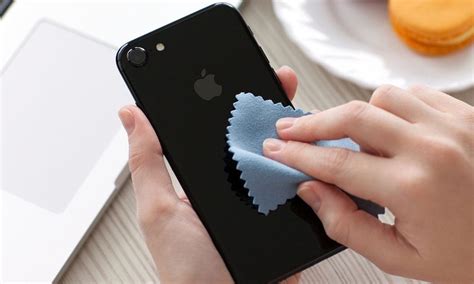Screen Protector Cleaning Tips for a Smudge-Free Experience
Maintaining a pristine screen protector is crucial for optimal clarity and a pleasant user experience. A smudged or dusty screen protector not only detracts from the visual appeal of your device but can also hinder touch sensitivity. This comprehensive guide offers expert cleaning tips to keep your screen protector sparkling clean and smudge-free, extending its lifespan and maximizing your device's performance.
Why is Cleaning Your Screen Protector Important?
Before diving into the cleaning methods, it's important to understand why regular cleaning is so vital. A dirty screen protector accumulates fingerprints, dust, oil, and other debris, leading to:
- Reduced Clarity: Smudges and dust particles obscure the display, making it difficult to see images and text clearly.
- Impaired Touch Sensitivity: A thick layer of grime can interfere with the touchscreen's responsiveness, causing lag or inaccurate inputs.
- Scratching: Grit and dust particles can act as abrasives, scratching your screen protector and potentially damaging the underlying screen.
- Reduced Lifespan: Regular cleaning helps prevent the buildup of dirt and grime, which can degrade the screen protector's material over time.
What You'll Need for a Perfect Clean
Gathering the right tools is half the battle. Avoid harsh chemicals and abrasive materials that could damage your screen protector. Here's what you'll need:
- Microfiber Cloth: This is your primary weapon against smudges. Choose a lint-free microfiber cloth specifically designed for cleaning electronics.
- Distilled Water: Tap water can contain minerals that leave streaks. Distilled water is the safest and purest option.
- Isopropyl Alcohol (70%): For tougher grime, a 70% isopropyl alcohol solution can be effective (always test on an inconspicuous area first).
- Soft-Bristled Brush (Optional): A very soft-bristled brush can help dislodge stubborn dust particles before wiping.
Step-by-Step Cleaning Process
Now for the cleaning process itself. Follow these steps for optimal results:
-
Power Off Your Device: This prevents accidental inputs and ensures you can focus on the cleaning process.
-
Prepare Your Workspace: Choose a clean, dust-free environment to minimize the chances of introducing new particles.
-
Initial Dust Removal: Gently brush away any loose dust or debris using the soft-bristled brush (if using one). Alternatively, use a blower to remove dust particles.
-
Dampen Your Microfiber Cloth: Lightly dampen your microfiber cloth with distilled water. Avoid soaking it—a slightly damp cloth is all you need.
-
Wipe the Screen Protector: Gently wipe the screen protector in a circular motion, applying light pressure. Work your way across the entire surface.
-
For Stubborn Smudges: If you encounter persistent smudges, lightly dampen a clean section of the microfiber cloth with a 70% isopropyl alcohol solution. Again, test this on a small, inconspicuous area first. Gently wipe the smudges, avoiding excessive pressure.
-
Dry Wipe: Use a clean, dry section of your microfiber cloth to remove any excess moisture.
-
Final Inspection: Inspect the screen protector for any remaining smudges or debris. Repeat the process if necessary.
How Often Should You Clean Your Screen Protector?
The frequency of cleaning depends on your usage and environment. As a general rule, aim to clean your screen protector:
- Daily: If you use your device frequently and it's exposed to dusty environments.
- Weekly: For most users, weekly cleaning is sufficient to maintain cleanliness.
What About Cleaning Solutions?
H2: Are commercial screen cleaning solutions necessary?
Commercial screen cleaning solutions are readily available, but they're not strictly necessary. A simple combination of distilled water and (if needed) isopropyl alcohol is usually sufficient for keeping your screen protector clean. Always check the product's instructions and ensure it's compatible with your screen protector's material.
H2: What cleaning solutions should I avoid?
Avoid using:
- Household cleaners: These are often too harsh and can damage the screen protector's coating.
- Paper towels: These can leave behind lint and scratches.
- Abrasive cloths: These can scratch the screen protector's surface.
Maintaining a Smudge-Free Screen Protector: Proactive Measures
Beyond regular cleaning, there are preventative steps you can take to minimize smudging:
- Use a Case: A phone case helps protect your screen protector from scratches and reduces the risk of smudging.
- Wash Your Hands: Before using your device, wash your hands to remove oils and dirt that could transfer to the screen.
By following these simple cleaning tips and adopting proactive measures, you can maintain a sparkling clean screen protector, ensuring optimal clarity and a consistently enjoyable user experience. Remember, gentle care and regular maintenance are key to extending the life and enhancing the performance of your valuable screen protector.

